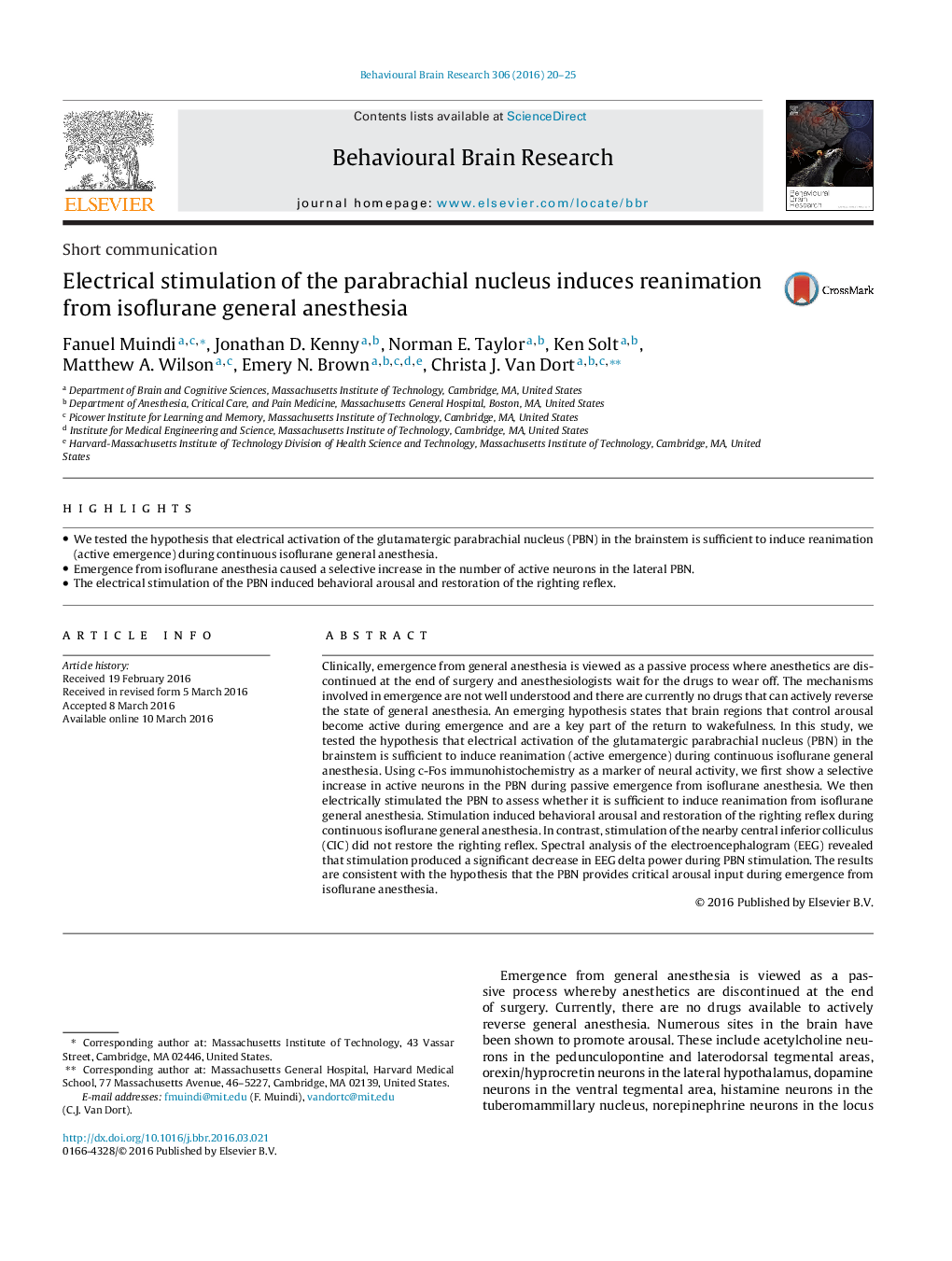| Article ID | Journal | Published Year | Pages | File Type |
|---|---|---|---|---|
| 6256104 | Behavioural Brain Research | 2016 | 6 Pages |
â¢We tested the hypothesis that electrical activation of the glutamatergic parabrachial nucleus (PBN) in the brainstem is sufficient to induce reanimation (active emergence) during continuous isoflurane general anesthesia.â¢Emergence from isoflurane anesthesia caused a selective increase in the number of active neurons in the lateral PBN.â¢The electrical stimulation of the PBN induced behavioral arousal and restoration of the righting reflex.
Clinically, emergence from general anesthesia is viewed as a passive process where anesthetics are discontinued at the end of surgery and anesthesiologists wait for the drugs to wear off. The mechanisms involved in emergence are not well understood and there are currently no drugs that can actively reverse the state of general anesthesia. An emerging hypothesis states that brain regions that control arousal become active during emergence and are a key part of the return to wakefulness. In this study, we tested the hypothesis that electrical activation of the glutamatergic parabrachial nucleus (PBN) in the brainstem is sufficient to induce reanimation (active emergence) during continuous isoflurane general anesthesia. Using c-Fos immunohistochemistry as a marker of neural activity, we first show a selective increase in active neurons in the PBN during passive emergence from isoflurane anesthesia. We then electrically stimulated the PBN to assess whether it is sufficient to induce reanimation from isoflurane general anesthesia. Stimulation induced behavioral arousal and restoration of the righting reflex during continuous isoflurane general anesthesia. In contrast, stimulation of the nearby central inferior colliculus (CIC) did not restore the righting reflex. Spectral analysis of the electroencephalogram (EEG) revealed that stimulation produced a significant decrease in EEG delta power during PBN stimulation. The results are consistent with the hypothesis that the PBN provides critical arousal input during emergence from isoflurane anesthesia.
